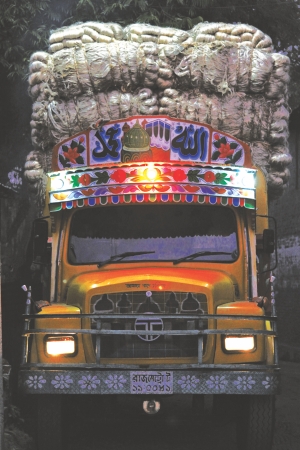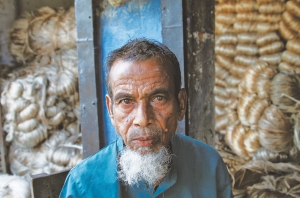| Home - Back Issues - The Team - Contact Us |
 |
| Volume 10 |Issue 45 | December 01, 2011 | |
|
|
Cover Story The Jute Grower's Dilemma Jute growers in most of the country, particularly of the Khulna belt, are faced with a devastating and yet common phenomenon: the market price of jute is only about half of the farming cost per mound. The farmers, who have not yet set their jute on fire or thrown them into the drains out of sheer frustration, have stored the vegetable fibres in massive piles in their homes, steadfast in their hope to see better days. Akram Hosen Mamun Back from Khulna Some of the middlemen for jute mills, who bought hundreds of mounds of jute from the farmers, are also at a loss. Narayan Adhikary, who buys and stores jute in his shop in Dumuria, Khulna says, “I've bought a lot of jute at the beginning of the season but I haven't been able to sell them yet.”
Farmers and businessmen around the country, particularly in the regions where jute grows best, are simply stupefied by the steady decline in jute market in this season, when the market is supposed to be at its peak. “I cultivated jute in one acre of my lands, but my house is brimming with mounds of jute now. The jute that is sold at Tk 1200/mound last year is only Tk 500 this year. I don't know if I should sell my jute,” says Mafijuddin, a 53-year-old farmer who lives in Mathbari village. Everywhere in the villages of Khulna, farmers are asking the same worrying question: “What shall we do with our jute?” Over the last three years, the demand for jute in the international market was so high that Bangladesh could hardly meet it. Encouraged by this, farmers have allocated larger proportions of their lands for jute cultivation this year. “Encouraged by last year's market, I planted jute on most of my lands this year,” said a middle-aged farmer named Badrul. According to newspaper reports, the national production of jute has seen a rise of nearly 30 percent. However, compared to last year, there is almost a 50 percent reduction in the price of jute per mound. The farmers inform that the jute mills have almost stopped buying jute from them. It has also been reported that the Bangladesh Jute Mills Corporation (BJMC) has not yet been able to sell the raw jute and jute sacks that it already has. High officials of the BJMC, who have refused to be interviewed for this article, have just echoed what the Textiles and Jute Minister Abdul Latif Siddiqui has said when journalists asked for his comments on the phenomenon: “Bangladesh had large markets of jute in Libya, Iran and Turkey. The Middle East crises, the earthquake in Turkey and the rise and fall of dollar price have caused the main international buyers to buy less this year.”
The History of Jute in Bengal The cultivation and harvest of jute has played a decisive role in the economy of Bengal for centuries. Jute, as raw material, has been exported from this part of the world to the western hemisphere since the 18th century. Bangladesh is still among the finest jute producing and exporting countries of the world. During the colonial era, jute of Bengal was taken to England to be used as raw materials for jute mills located there. Then in the 50s, the government of Pakistan established several jute mills in the then East Pakistan. With continued government subsidies, the industries flourished in a short span of time and the export of jute became the main source of foreign earnings for Pakistan's economy. Although jute was produced in East Pakistan, the earnings were spent mostly in the West.
In the late 60s, jute was a central issue in the politics against discriminatory and repressive state policies. During the war of liberation, people dreamt that the jute of the independent nation would change their lives. But, since the country's independence, the successive governments' policies have only served to debilitate the jute industry. In 1972, all the jute mills and other abandoned industries of Bangladesh were nationalised. BJMC was formed to oversee the 77 state owned jute mills. However, the process of nationalisation was not well thought out. Lack of effective management, corruption and the use of mill workers for political purposes marked the gradual fall of the jute industries in the following years. Then in the early 80s, in a drive towards privatisation, nearly half of the state owned jute mills were returned to their former owners. One can say that it was the beginning of an era of destruction of our national jute industries. Keeping in line with the World Bank's adjustment policies, the government privatised jute mills one after another. The remaining jute mills faced gradual subsidy cuts and long overdue budget allocation to buy raw jute. Trade unions were formed and used to populate the demonstrations of the ruling party.
The World Bank Phenomenon
From the mid 80s, thousands of jute mill workers lost their jobs, while the factories that were not shut by the government reduced their number of looms. The most visible intervention of the World Bank in the already failing jute industry took place in the 90s. The World Bank and the government signed agreements to reform the jute mills in 1994. Under the label of Jute Sector Adjustment Credit, hundreds of millions of dollars were loaned to the government. But the money was not used to modernise the machinery of the mills, nor was it used to pay the overdue salaries to the workers. Rather the government was required by the bank to fire tens of thousands of workers to stop giving salary increments, to close one after another state owned mills and to significantly reduce the number of looms in the jute mills while the functioning mills frequently laid off thousands of workers. A much discussed logic behind the World Bank's crusade against state-owned industries was that saving government subsidies for industries for 18 months will give us enough to construct a bridge over the Jamuna. In his studies, noted economist MM Akash, found that apart from being a catchy rhetoric, the statement was “an utter lie”. And the whole thing was “a matter of some mathematics on paper. The government didn't ever have to pay that amount of money from its coffers as subsidies to the 'manufacturing' sector,” he stated.
Along with the closure of other jute mills the world's largest Adamjee Jute Mills was also declining in the mid '90s. Despite huge criticism and protests from policy makers and progressive political parties, Adamjee was finally closed in 2002. In the following years, one after another jute mill in Sirajganj and Khulna were closed down. All these may defy the credibility of someone who is not familiar with the legacy that this system of 'development' has left in 'third world' countries in contemporary history. Or one may find the colossal scale of cynicism, simply stupefying. The Aftermath The Bangladeshi jute industry has always been mostly export-oriented. We export jute sacks and also raw jute, that is, the jute that is used as raw materials for industries located in other countries. With the death of so many jute mills, the export, in recent years, was mostly comprised of raw jute to India.
However, with government funds, the state-owned jute mills in Khulna and the Qaumi Jute Mills in Sirajganj went on production again in the last couple of years. As demand for jute goods from foreign buyers was steadily on the rise, the Khulna jute mills purchased a record 6.42 lakh quintal (1 quintal = more than 2 maunds) of raw jute from farmers during the harvesting season of 2010, reported newspapers. This year is a stark contrast for farmers in Khulna belt. The jute growers – farmers living on the edge – didn't know what was coming when they cultivated jute on their land. “I will not cultivate jute in my life again,” says a dismayed young farmer of Chukpur. His home is crammed with piles of golden fibre now. If the stacks get wet or dampen too much, the fibres will rot, and if they catch fire, they will burn down the farmers' houses in a minute. The farmers are in a tragic dilemma. A 64-years-old farmer named Kismat Shikdar came to Kharnia Bazar near Dumuria, Khula, to sell his jute. He devoted a bigha (about a third of an acre) of his land for jute this year. “The money I'm getting for each mound is not even half of the marginal price. But I don't have any choice: I need immediate cash to plant paddy in my field. And I need to get rid of the mounds of jute, because I have no place to store them.” he said. The landless farmers, who took loans from NGOs and planted jute on leased lands, are in the most terrible fix. Shahidul Sardar is one such farmer. The fall of price has not only made him poorer but also left him indebted to the NGOs. “I'll have to pay them back even if I have to steal or else I'm done.” It is always the farmers, the actual producers, who get the least and are the ultimate victims. The middlemen, on the other hand, always get the most. Newspapers have reported that the middlemen have taken control and made profit by storing huge quantities of jute after buying them at cheap prices from farmers. The Reason Behind the Recent Fall of Price To provide logic behind this phenomenon, high officials of the BJMC and the Textiles and Jute minister have informed us that the demand for jute in the international market has declined. If we had an internal market for jute products, the industry would not have to suffer like this.
Unlike us, India has made great progress in securing a stable internal market for their jute products in recent years. They have made it obligatory for their local food growers and industries to use 90-100 percent jute sacks for packaging. In the international market, Indian producers have found new buyers. Their governments have also significantly increased its budgetary allocation for jute mills during the last decade. We have, on the other hand, enacted a similar law: Mandatory Jute Packaging Act, 2010. The act makes it a must for manufacturers and traders of food grains and other agricultural products to use packaging materials made of jute. But the fact that BJMC is struggling with its stocks of jute sacks in the international and internal market is enough to understand that no initiative has been taken to implement the law. Ironically, the use of jute sacks has seen a great decline since the enactment of the law, reported a newspaper. Shamsul Haque, the director (marketing) of BJMC was quoted as saying that the sale of jute sacks was far better before the law came into effect.
Moreover, jute mill sources who preferred to be anonymous said that there has been nepotism and corruption in the recruitment in the newly reopened jute mills. Like the past, there are still cadre groups of the two major political parties among the workers, all of whom operate under the guise of trade unions. “Nothing will change as long as they keep these lazy and corrupt officials here,” says Jajal Uddin, a worker of the Crescent Jute Mill, Khulna. The land and environment of Bangladesh is highly suitable for cultivating jute. The possibilities are immense. Establishing a successful jute industry will strengthen our economy. The livelihood of hundreds of thousands of families and also the question of our economic sovereignty is intertwined with the development of this sector. “The farmers have wives and children to feed. We want the government and the jute mills to buy our harvest. Jute is still in demand in the international market. The government should look for new buyers of our jute products,” demanded Bishwanath, a farmer and activist of Kharnia. Copyright (R) thedailystar.net 2011 |
||||

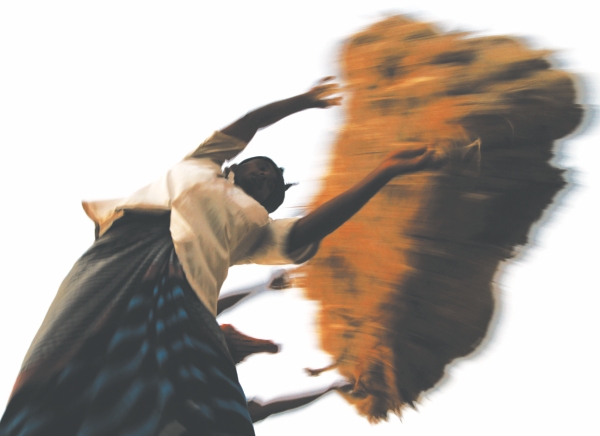
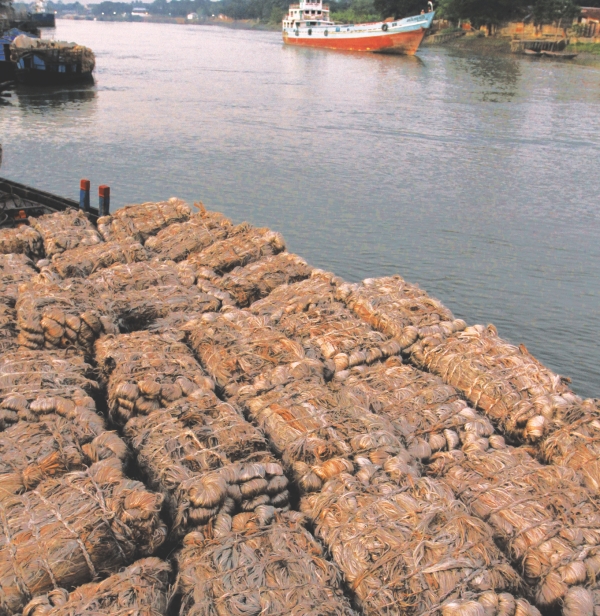
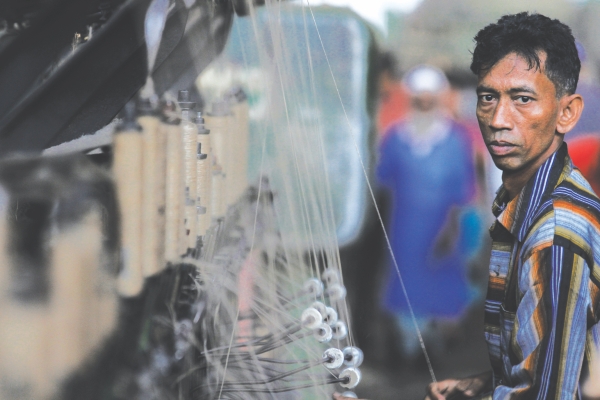
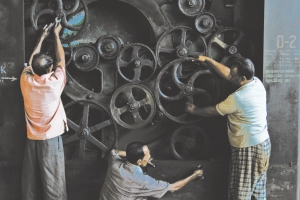 As an obvious consequence to all these, the factories incurred heavy losses. To the think tanks of the World Bank and complicit government officials, the solution to these problems lay in closing or privatising the mills.
As an obvious consequence to all these, the factories incurred heavy losses. To the think tanks of the World Bank and complicit government officials, the solution to these problems lay in closing or privatising the mills.
